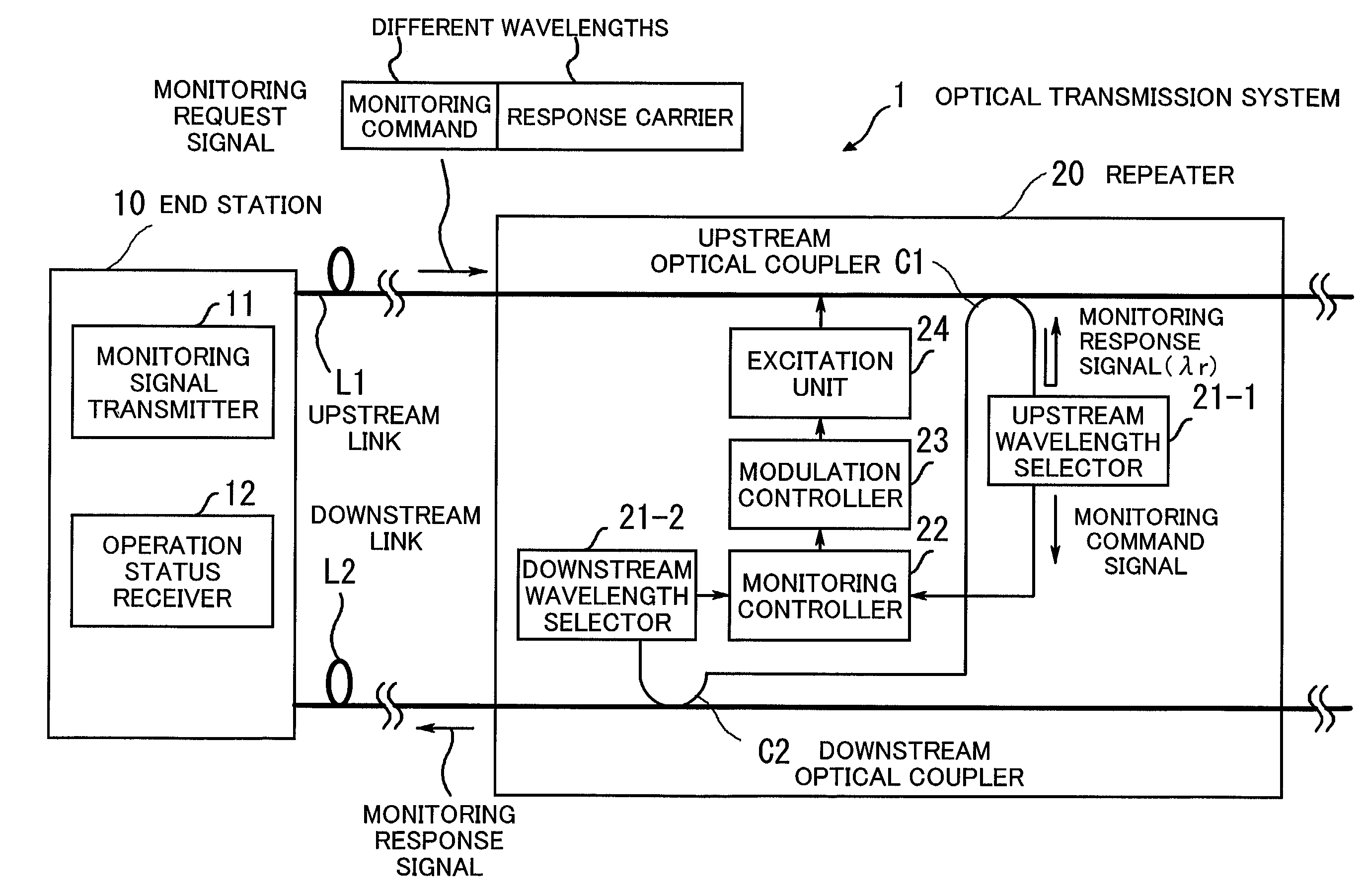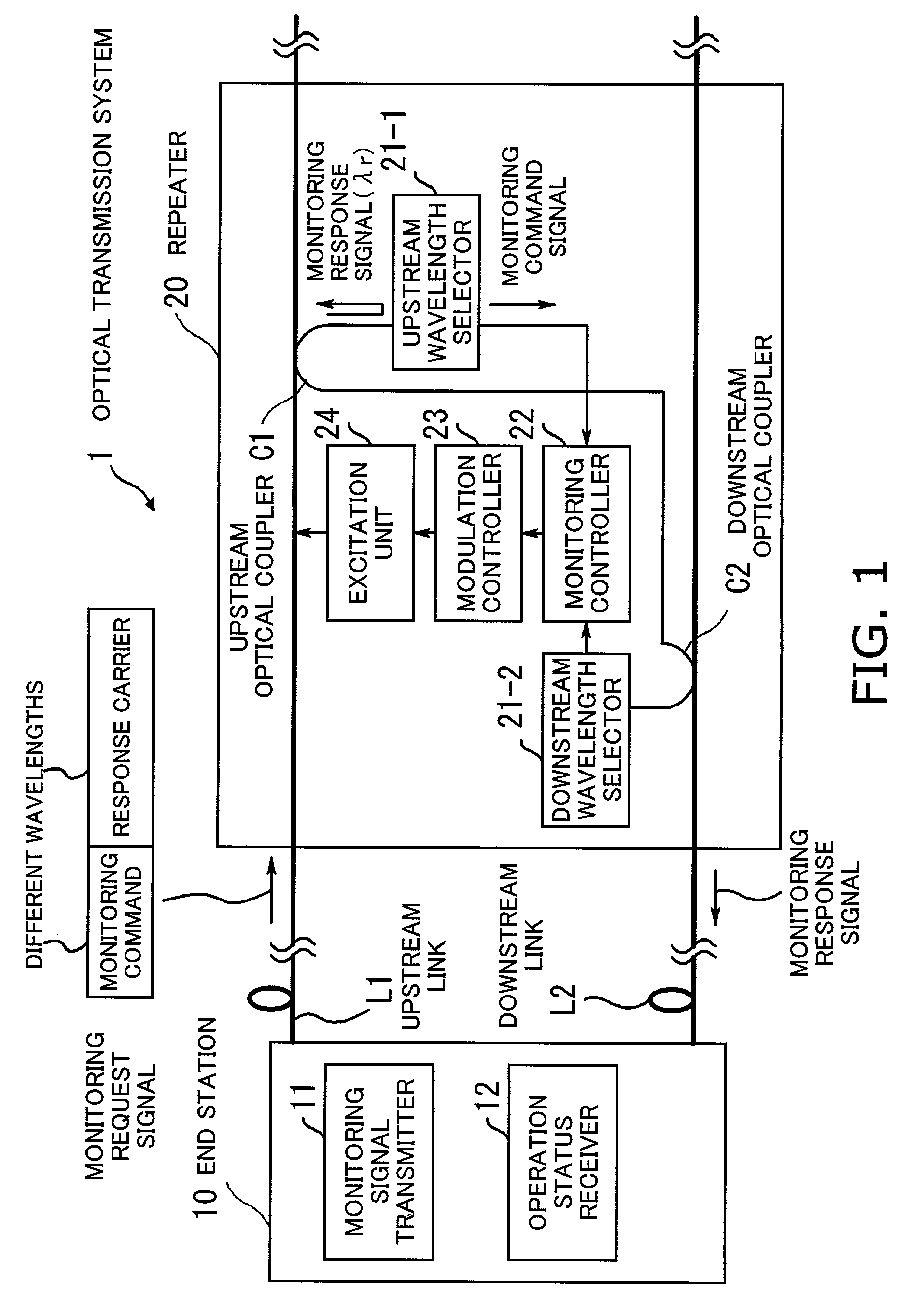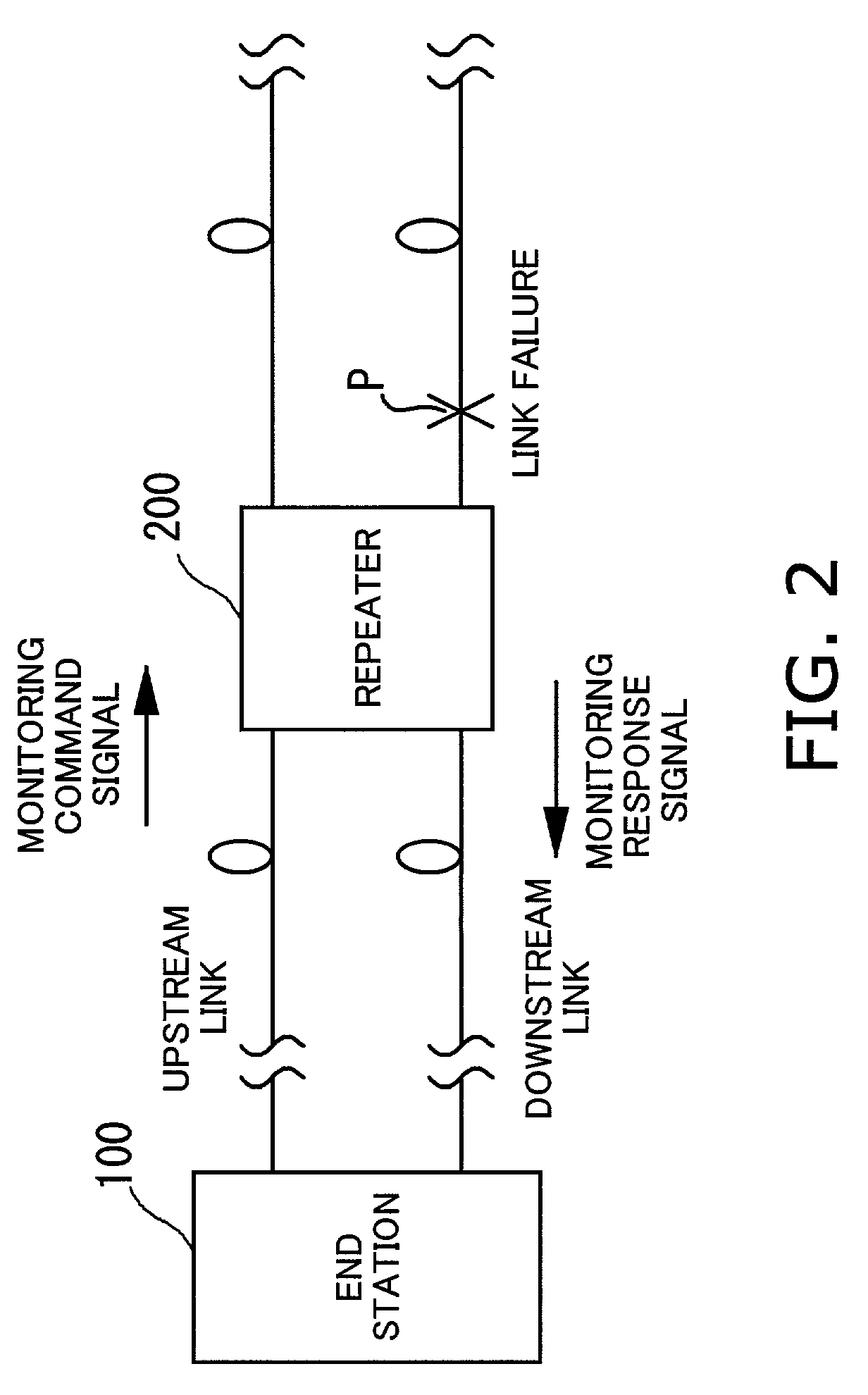Optical transmission system
a transmission system and optical transmission technology, applied in the field of optical transmission systems, can solve the problems a large repair cost, and a serious problem, and achieve the effect of effectively monitoring the operating status of raman amplification repeaters
- Summary
- Abstract
- Description
- Claims
- Application Information
AI Technical Summary
Benefits of technology
Problems solved by technology
Method used
Image
Examples
first embodiment
[0072]FIG. 8 is a block diagram of the present invention. The illustrated repeater 20-1 has the following elements: FBGs 21-1 and 21-2, photodiodes PD1 and PD2, laser diodes LD1 and LD2, a supervisory circuit (SV), optical couplers C1 and C2, and WDM couplers Cw1 and Cw2. It is assumed in FIG. 8 that an end station 10 (not shown) is located on the left of the repeater 20-1. When a monitoring request signal is received from the end station 10, this repeater 20-1 operates as follows:[0073](S21) The optical monitoring request signal is split off at the upstream optical coupler C1 and directed to the inside of the repeater 20-1.[0074](S22) The FBG 21-1 allows the monitoring command signal to pass through to the upstream photodiode PD1.[0075](S23) The upstream photodiode PD1 transduces the optical monitoring request signal into an electric signal for delivery to the supervisory circuit SV.[0076](S24) The supervisory circuit SV recognizes the received signal as a monitoring command signal...
fourth embodiment
[0091]FIG. 16 is a block diagram of a repeater 20-4 according to the present invention. This repeater 20-4 differs from the preceding ones in its use of 3-dB couplers C3-1 and C3-2. The first 3-dB coupler C3-1 distributes pump beams from laser diodes LD1 and LD2 to the upstream link L1 and downstream link L2 in their respective backward directions through WDM couplers Cw1 and Cw2. Likewise, the second 3-dB coupler C3-2 distributes pump beams from laser diodes LD3 and LD4 to the upstream link L1 and downstream link L2 in their respective forward directions through WDM couplers Cw1a and Cw2a. This means that the illustrated repeater 20-4 pumps both forward and backward, thus performing two-way-pumped Raman amplification.
fifth embodiment
[0092]FIG. 17 is a block diagram of a repeater 20-5 according to the present invention. This repeater 20-5 differs from the preceding ones in its use of directional isolators. One isolator ISO1 is placed between the WDM coupler Cw1 and optical coupler C1 on the upstream link L1. Another isolator ISO2 is placed between the WDM coupler Cw2 and optical coupler C2 on the downstream link L2. These upstream and downstream isolators ISO1 and ISO2 prevent optical signals from propagating in unintended directions, thus suppressing multiple-reflection degradation. This feature of the illustrated repeater 20-5 ensures stable operation of optical amplifiers.
PUM
 Login to View More
Login to View More Abstract
Description
Claims
Application Information
 Login to View More
Login to View More - R&D
- Intellectual Property
- Life Sciences
- Materials
- Tech Scout
- Unparalleled Data Quality
- Higher Quality Content
- 60% Fewer Hallucinations
Browse by: Latest US Patents, China's latest patents, Technical Efficacy Thesaurus, Application Domain, Technology Topic, Popular Technical Reports.
© 2025 PatSnap. All rights reserved.Legal|Privacy policy|Modern Slavery Act Transparency Statement|Sitemap|About US| Contact US: help@patsnap.com



